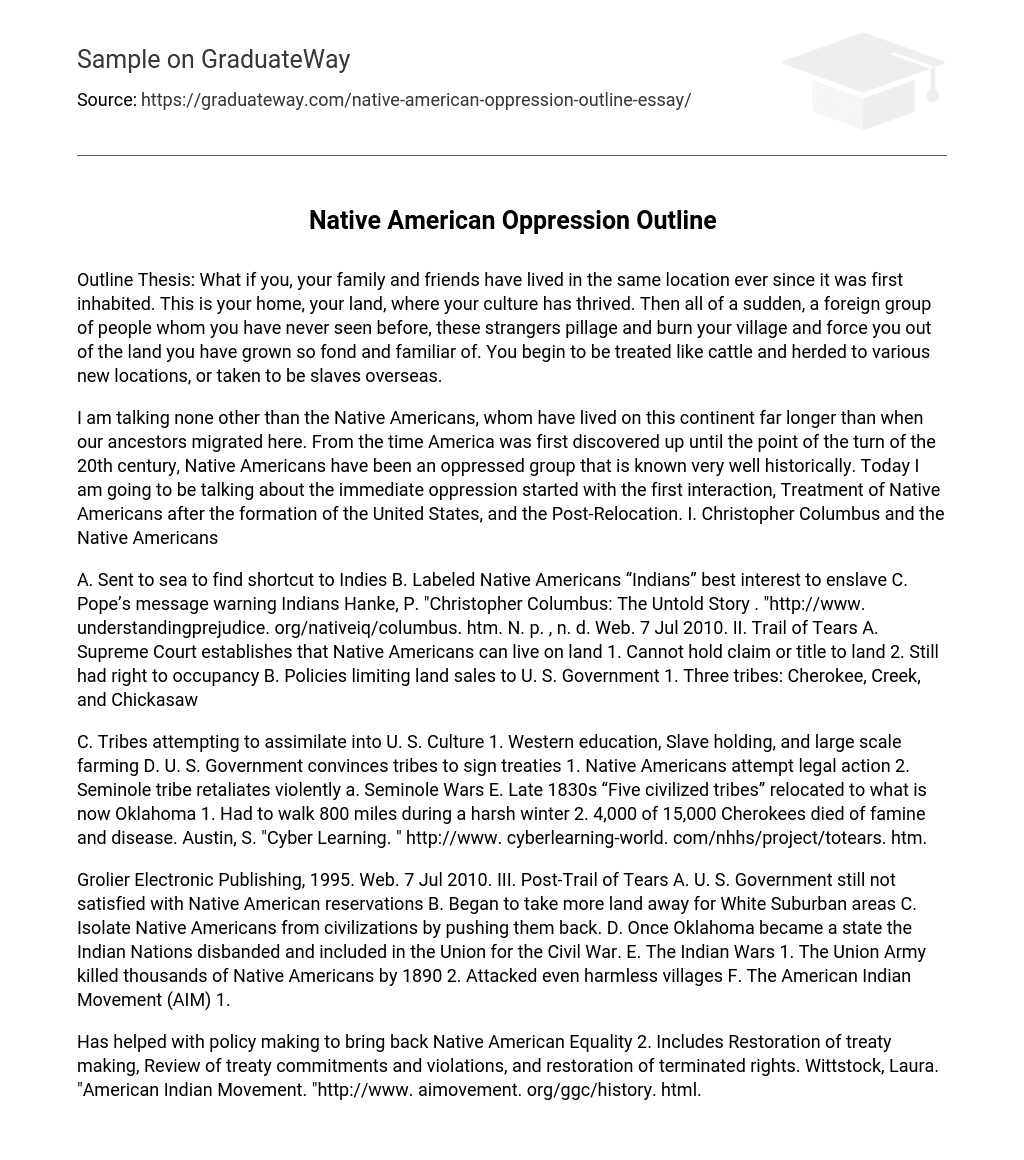Outline Thesis: What if you, your family and friends have lived in the same location ever since it was first inhabited. This is your home, your land, where your culture has thrived. Then all of a sudden, a foreign group of people whom you have never seen before, these strangers pillage and burn your village and force you out of the land you have grown so fond and familiar of. You begin to be treated like cattle and herded to various new locations, or taken to be slaves overseas.
I am talking none other than the Native Americans, whom have lived on this continent far longer than when our ancestors migrated here. From the time America was first discovered up until the point of the turn of the 20th century, Native Americans have been an oppressed group that is known very well historically. Today I am going to be talking about the immediate oppression started with the first interaction, Treatment of Native Americans after the formation of the United States, and the Post-Relocation. I. Christopher Columbus and the Native Americans
A. Sent to sea to find shortcut to Indies B. Labeled Native Americans “Indians” best interest to enslave C. Pope’s message warning Indians Hanke, P. “Christopher Columbus: The Untold Story . “http://www. understandingprejudice. org/nativeiq/columbus. htm. N. p. , n. d. Web. 7 Jul 2010. II. Trail of Tears A. Supreme Court establishes that Native Americans can live on land 1. Cannot hold claim or title to land 2. Still had right to occupancy B. Policies limiting land sales to U. S. Government 1. Three tribes: Cherokee, Creek, and Chickasaw
C. Tribes attempting to assimilate into U. S. Culture 1. Western education, Slave holding, and large scale farming D. U. S. Government convinces tribes to sign treaties 1. Native Americans attempt legal action 2. Seminole tribe retaliates violently a. Seminole Wars E. Late 1830s “Five civilized tribes” relocated to what is now Oklahoma 1. Had to walk 800 miles during a harsh winter 2. 4,000 of 15,000 Cherokees died of famine and disease. Austin, S. “Cyber Learning. ” http://www. cyberlearning-world. com/nhhs/project/totears. htm.
Grolier Electronic Publishing, 1995. Web. 7 Jul 2010. III. Post-Trail of Tears A. U. S. Government still not satisfied with Native American reservations B. Began to take more land away for White Suburban areas C. Isolate Native Americans from civilizations by pushing them back. D. Once Oklahoma became a state the Indian Nations disbanded and included in the Union for the Civil War. E. The Indian Wars 1. The Union Army killed thousands of Native Americans by 1890 2. Attacked even harmless villages F. The American Indian Movement (AIM) 1.
Has helped with policy making to bring back Native American Equality 2. Includes Restoration of treaty making, Review of treaty commitments and violations, and restoration of terminated rights. Wittstock, Laura. “American Indian Movement. “http://www. aimovement. org/ggc/history. html. N. p. , n. d. Web. 7 Jul 2010. Conclusion: Since the first interaction with Columbus, the Trail of Tears by the U. S. government, and the continuing of a harsh relationship with the U. S. government Native Americans have been an oppressed group that is known very well historically.





